In the figure shown, upper block is given a velocity of 6m/s and lower block. 3m/s. When relative motion between them is stopped
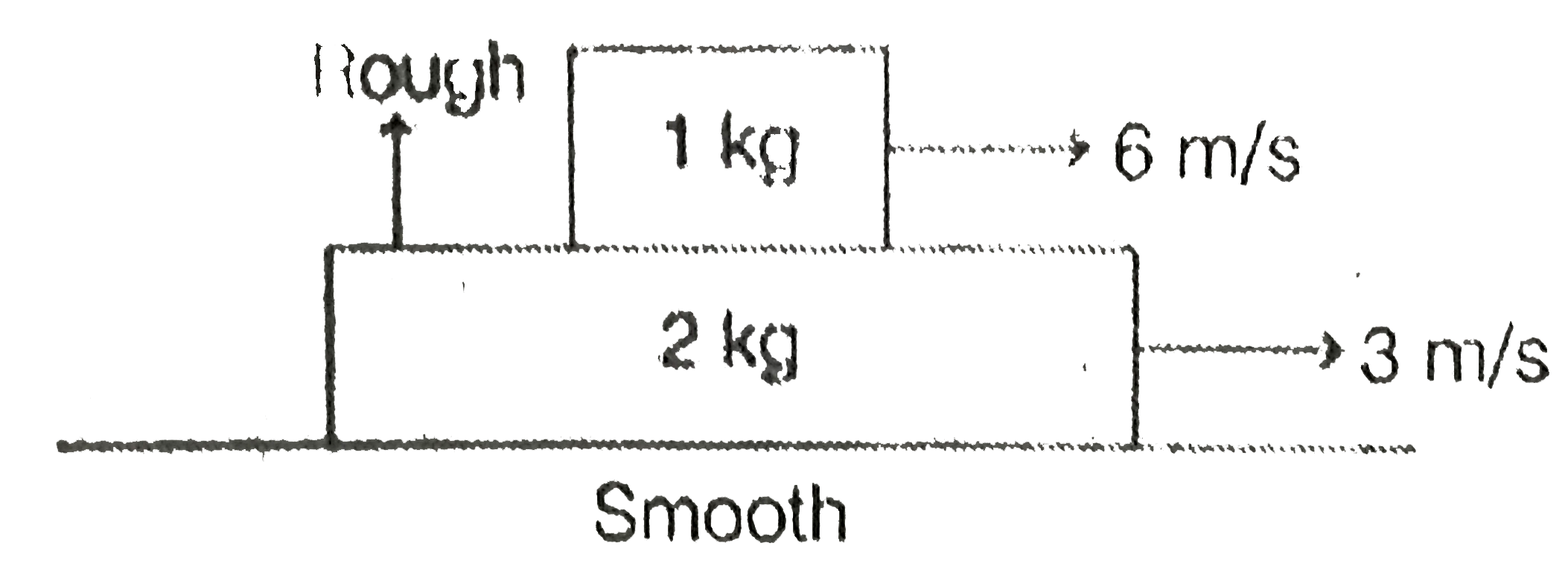
Work done by friction on upper block is negative
Work done by frictoin on both the blocks is negative
Work done by friction on lower block is negative
Work done by friction on both the blocks is positive
The correct Answer is:A
Step by step video, text & image solution for In the figure shown, upper block is given a velocity of 6 m//s and lower block. 3 m//s. When relative motion between them is stopped by Physics experts to help you in doubts & scoring excellent marks in Class 11 exams.
Topper's Solved these Questions
- BOOK - DC PANDEYCHAPTER - WORK, POWER AND ENERGYEXERCISE - D Matrix Matching Type Questions10videos
WORK, POWER AND ENERGY
- BOOK - DC PANDEYCHAPTER - WORK, POWER AND ENERGYEXERCISE - E Integer Type Questions11videos
WORK, POWER AND ENERGY
- BOOK - DC PANDEYCHAPTER - WORK, POWER AND ENERGYEXERCISE - B More than One Option is Correct26videos
WORK, POWER AND ENERGY
- BOOK - DC PANDEYCHAPTER - WORK, ENERGY AND POWEREXERCISE - MEDICAL ENTRACES GALLERY33videos
WORK, ENERGY AND POWER
Similar Questions
In the figure shown, upper block is given a velocity 6m/s and very long plank, velocity 3m/s The following quantities are to be matched when both attain same velocity.

Column-1 Column-2(A)Work done by friction on 1 kg block in joule(P) Positive(B)Work done by friction on 2 kg plank in joule(Q) Negative(C)Magnitude of change in momentum in N-s of 2 kg plank(R) 3(D)Change in KE of system consisting of block and plank in joule(S) 7(T) 2View SolutionCoefficient of friction between two block shown in figure ia μ=0.4. The blocks are given velocities of 2m/s and 8m/s in the directions figure. Find
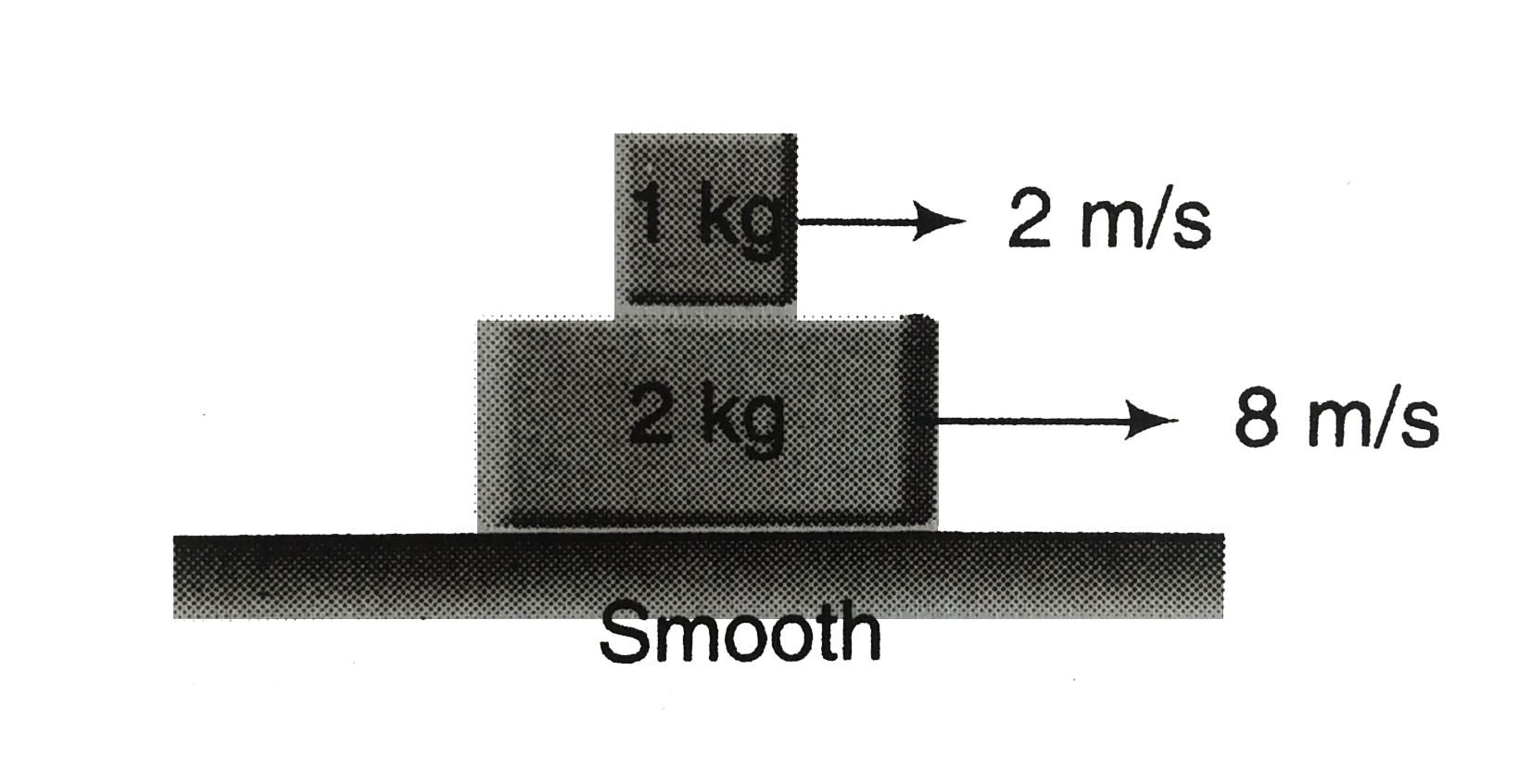
(a) The time when relative motion between them will stop
(b) the common velocities of blocks upto that instant. (c) Displacement of 1kgand 2kg block upto that instant (g=10m/s2).View Solution
Knowledge Check
- Question 1 - Select One
In the figure two blocks are given velocities as shown. The lower block is very long. Find velocities of both the blocks when relative motion between them is ceased
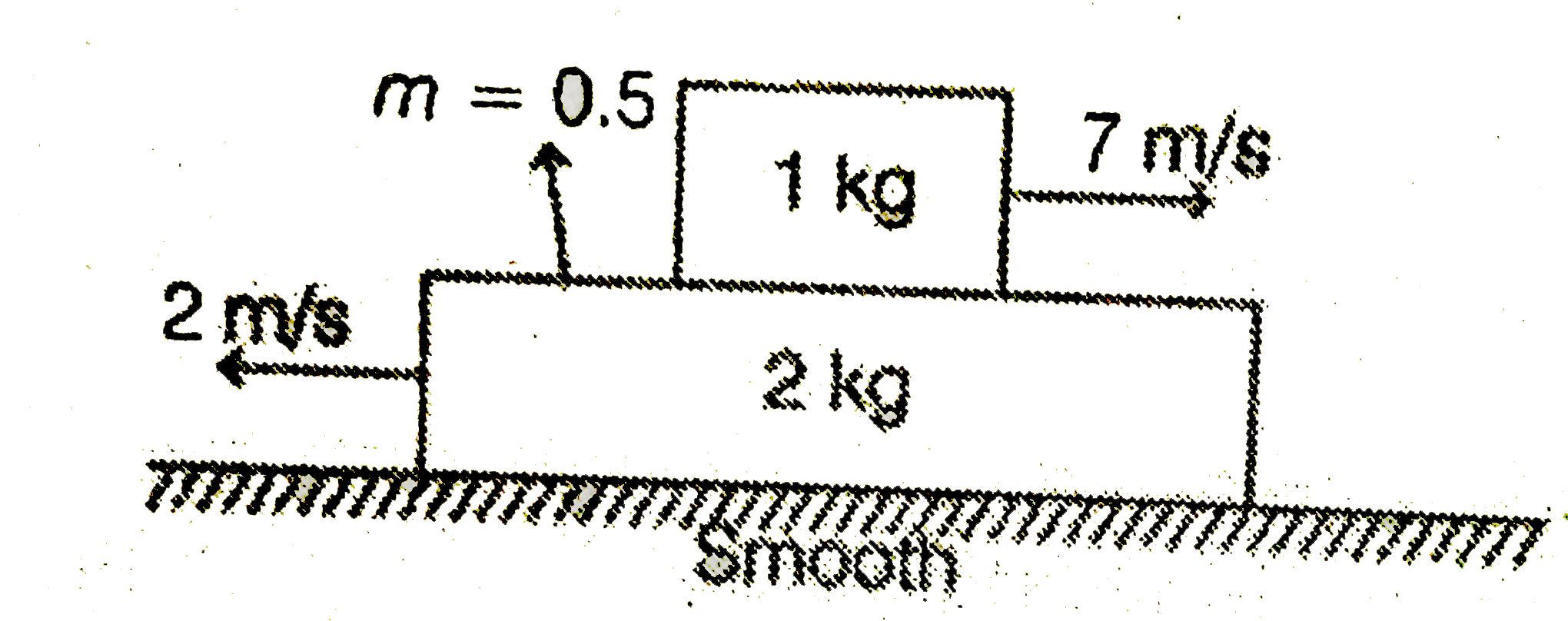 A2m/s (towards right)B1m/s (towards left)C2m/s (towards left)D1m/s (towards right)
A2m/s (towards right)B1m/s (towards left)C2m/s (towards left)D1m/s (towards right) - Question 2 - Select One
A block of mass m = 1 kg is placed over a plank Q of mass M = 6 kg, placed over a smooth horizontal surface as shown in figure. Block P is given a velocity v=2m/s2 to the right. If the coefficient of friction between P and Q is μ=0.3. Find the acceleration of Q relative to P.
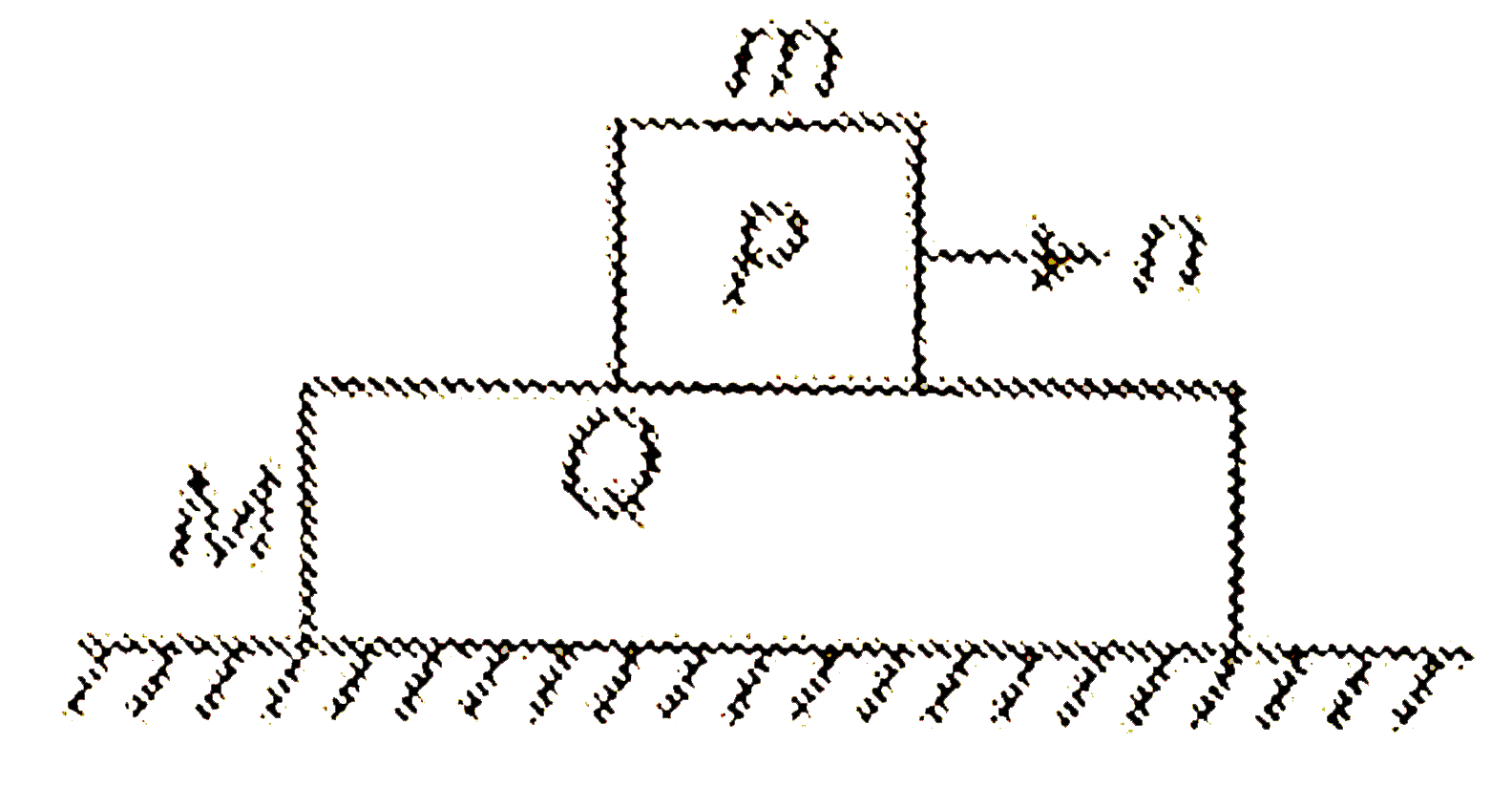 A4m/s2B3.5m/s2C2m/s2D10.0m/s2
A4m/s2B3.5m/s2C2m/s2D10.0m/s2 - Question 3 - Select One
Three blocks of masses m , m and M are kept on a frictionless floor as shown in the figure .The leftmost block is given velocity v towards the right . All the collision between the blocks are perfectly inelastic . The loss in kinetic energy after all the collision is 5/6th of initial kinetic energy. The ratio of M/m will be
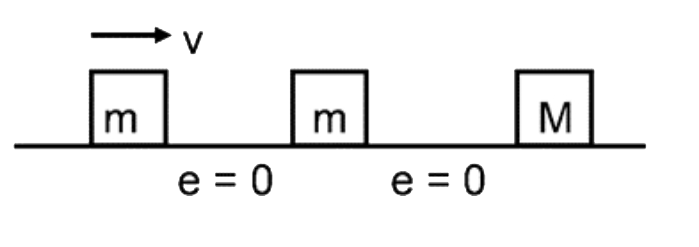 A14B18C2D4
A14B18C2D4
Coefficient of friction between two blocks shown in Fig. 7.203 is μ=0.4 . The blocks are given velocities of 2 m/s and 8 m/s in the directions shown in figure . The time when relative motion between them will stop is ( in sec) . :
 View Solution
View Solutioncoefficient of friction between two blocks shown in figure is μ=0.6. The blocks are given velocities in the direction shown in figure. Find
(a) the time when relative motion between them is slopped.
(b) the common velocity of the two blocks.
(c) the displocement of 1kg and 2kg blocks upto that instant. (Takeg=10m/s2)
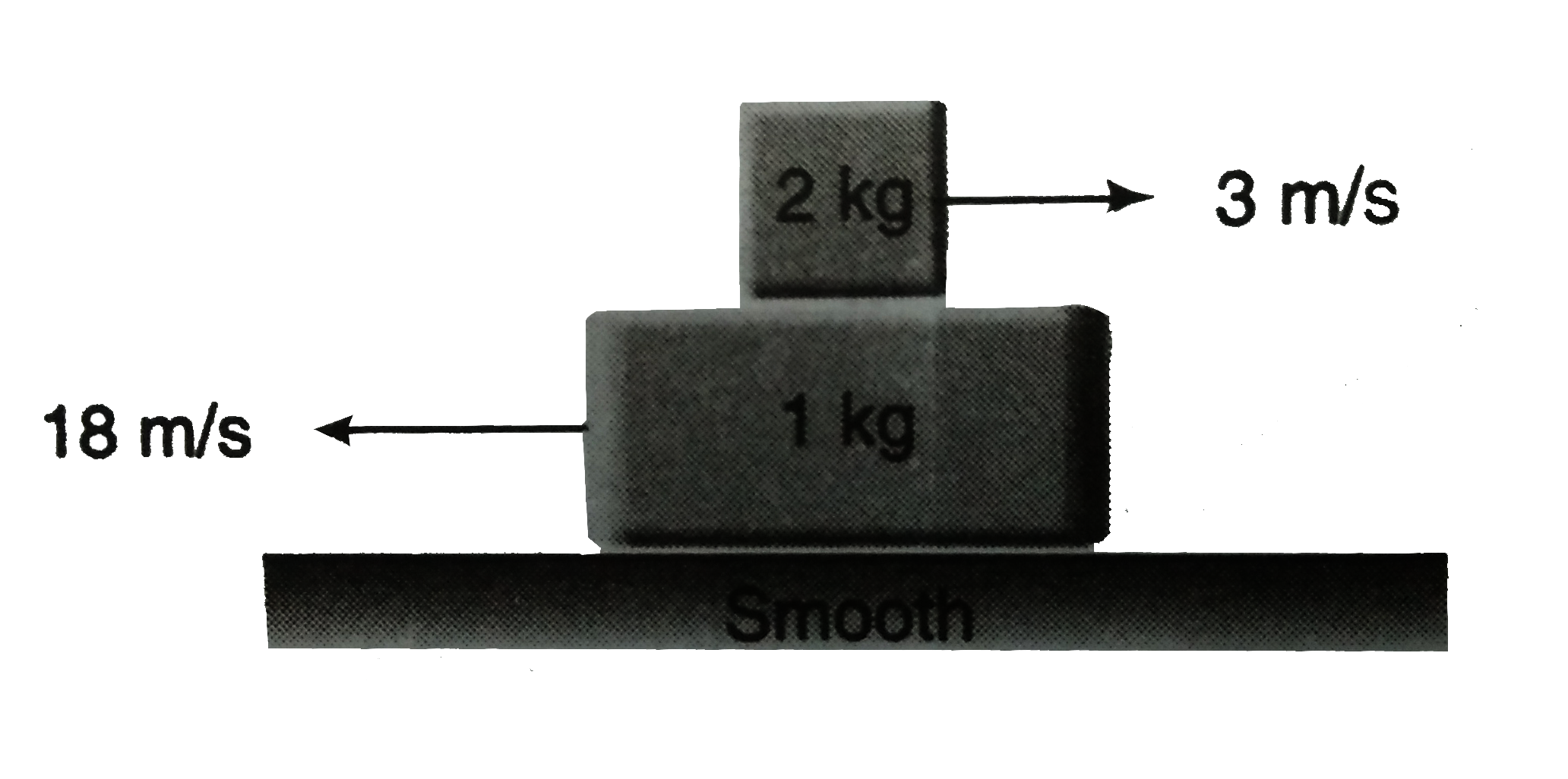 View Solution
View SolutionThe coefficient of friction between the two blocks shown in the figure is μ=0.4 and between the lower block and the ground is zero. The blocks are given velocities of 2ms−1 and 8ms−1 respectively in the direction shown in the figure. In how much time (in seconds) the slipping between the blocks will stops ?
 View Solution
View SolutionBlock A of mass 5kg is placed on long block B having a mass of 5kg. The coefficient of friction between two block is 0.4. There is no friction between the ground and lower block. The upper block is given a sudden velocity of 10m/s. The upper block slides toward right, so friction force acting on it will be toward left. Its reaction wall act on the lower block, which will act forward . The friction force absorbs x mechanical energy from upper block but supply only y mechanical energy to lower block. Due to friction the velocity of upper block reduces and velocity of lower block increases. This will continue till velocity of both the block get equal.
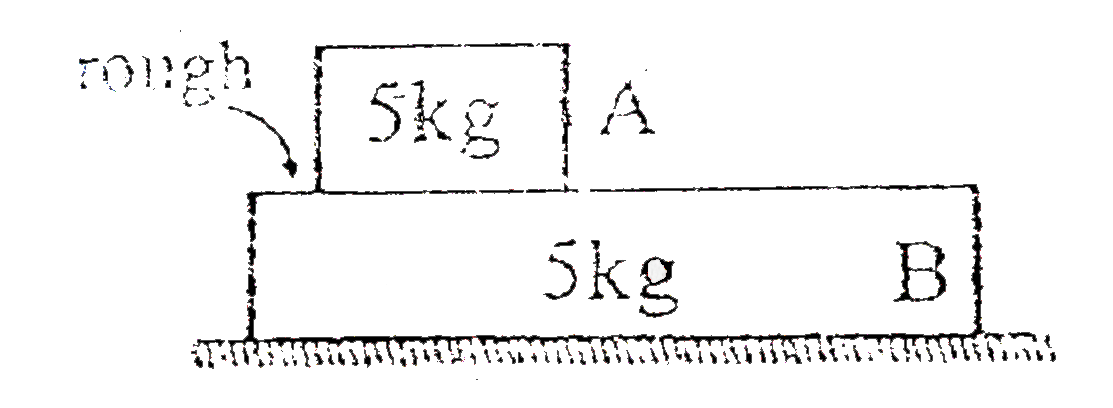
Which curve shows the correct variation of velocity of each block v/s time?View SolutionBlock A of mass 5kg is placed on long block B having a mass of 5kg. The coefficient of friction between two block is 0.4. There is no friction between the ground and lower block. The upper block is given a sudden velocity of 10m/s. The upper block slides toward right, so friction force acting on it will be toward left. Its reaction wall act on the lower block, which will act forward . The friction force absorbs x mechanical energy from upper block but supply only y mechanical energy to lower block. Due to friction the velocity of upper block reduces and velocity of lower block increases. This will continue till velocity of both the block get equal.
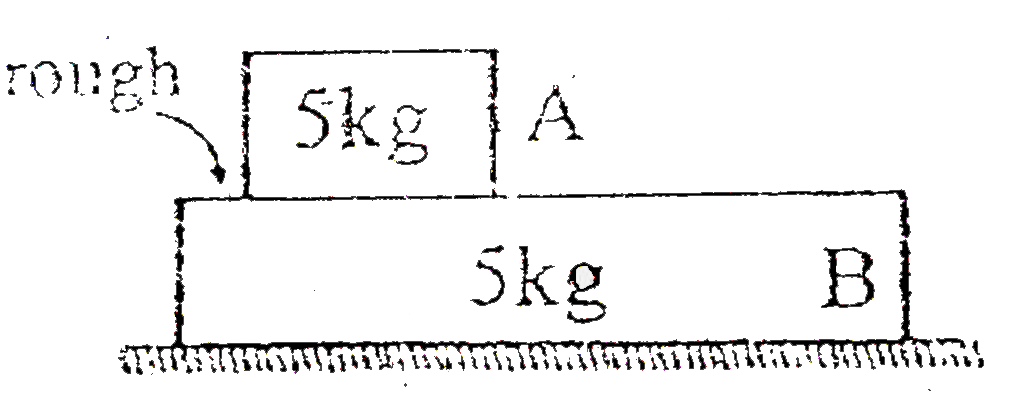
The net energy loss due to friction in the entire process isView Solution

